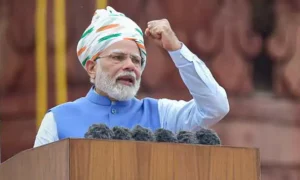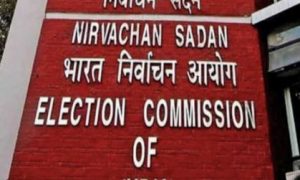Richard Thaler, the winner of the 2017 Nobel prize in economics and who coined the ‘nudge theory’, believes that sometimes all it takes for people to act in their own self-interest is a little bit of nudge.
India’s Credit Linked Subsidy Scheme is just that push needed to encourage first-time homebuyers to take that leap of faith, and in doing so provide the much-needed support to real estate, an industry that’s been going through one bad year after another for almost half a decade now. Sample this for example: Demonetisation, the introduction of GST, the new realty law RERA and now the Covid-19 pandemic. But then there’s a rare piece of good news too — CLSS has been extended.
To bring back the trust in the real estate market, the Central government has taken several measures in the last six years. The Real Estate (Regulation and Development) Act has been brought to regulate and bring transparency in the sector. The government also took many steps to boost housing demand through the lower GST rate of one per cent for affordable housing.
CLSS is among those measures and was introduced in June 2015, under which an upfront interest subsidy of up to Rs 2.7 lakh is provided to the first-time homebuyers falling in the categories of Economically Weaker Section (EWS), Lower Income Group (LIG) and Middle Income Group (MIG).
Initially, the CLSS scheme was meant for only EWS/LIG but in 2017, it was extended to include the Middle Income Groups in two parts — MIG 1 and MIG 2. The interest subsidy under the CLSS, which is part of the Prime Minister Narendra Modi’s flagship scheme PMAY-Urban, has been a major catalyst for creating demand for housing units, especially below Rs 50 lakh in suburbs of big cities or in tier II and tier III cities.
According to data from the Ministry of Housing and Urban Affairs, more than 10 lakh beneficiaries belonging to EWS, LIG and MIG have so far benefited from CLSS. Housing finance major HDFC Ltd has recently announced that it has sanctioned home loans of over Rs 47,000 cr to more than 2 lakh first-time homebuyers so far under the government’s Credit Linked Subsidy Scheme (CLSS). HDFC has passed on interest subsidy of more than Rs 4,700 cr to these beneficiaries.
The CLSS scheme for MIG category, which had lapsed in March 2020, was recently extended until March 31, 2021 as part of the government’s package to deal with the COVID situation. The scheme will remain valid up to March 31, 2022 for the EWS/LIG category. According to the government, the extension of the CLSS for MIG category until March next year is expected to benefit 2.5 lakh middle-income families in the current fiscal year. This will also result in an investment of over Rs 70,000 cr in the housing sector.
Considering the success of this scheme since 2015, this is a good step by the government to help the housing sector in tiding over the COVID-19 crisis. In fact, the Centre should actively consider extending the CLSS till March 2024 for all the income categories, given the current abysmal health of the real estate sector. The housing ministry should push banks and housing finance companies for faster sanctioning of home loans and disbursal of subsidies under this scheme.
Low interest rates on home loan at around 7 per cent coupled with stable housing prices in the last few years have made purchase of residential properties an attractive proposition. Moreover, builders in distress are offering discounts to clear their inventories. The CLSS program serves as the icing on the cake
Benefits of CLSS
Under this scheme, a home buyer who avails a housing loan from any financial institution, be it a bank, housing finance company or other such institution, is eligible for an interest subsidy of up to Rs 2.67 lakh.
The interest subsidy is 6.5 per cent, 4 per cent and 3 per cent on home loan amounts up to Rs 6 lakh, Rs 9 lakh and Rs 12 lakh for a house with carpet area of up to 60, 160 and 200 square meter for EWS/LIG, MIG I and MIG II categories, respectively. So, the maximum subsidy amount ranges from Rs 2.3 lakh to Rs 2.67 lakh, depending on three factors: loan amount, size of house and the borrower’s category depending on his or her annual income.
Who’s Eligible?
To start with, the scheme is available to those who do not own a pucca house of their own anywhere in India. Second, the subsidised interest rates vary according to annual income, loan tenure and loan amount.
Annual household income between Rs 6 lakh and Rs 12 lakh (MIG I): The interest subsidy is 4 per cent on a 20-year loan. It is to be noted that irrespective of the loan amount, the subsidy is available till loan amount of Rs 9 lakh or the actual loan amount, whichever is lower. So, if you are in the MIG I catagory and take a home loan of Rs 11 lakh, the subsidy will be calculated on Rs 9 lakh. For the remaining Rs 2 lakh, the lender’s interest will apply.
Annual household income between Rs 12 lakh and Rs 18 lakh (MIG II category): Home buyers in the MIG II category can avail an interest subsidy of 3 per cent on the 20-year loan plan for a loan amount of up to Rs 12 lakh even if the actual amount is higher. This means that additional loans beyond the specified limit will attract non-subsidised rates.
If you plan to buy a house using the CLSS subsidy, you can calculate the eligible subsidy amount on https://www.pmaymis.gov.in/EMI_Calculator.aspx
How does it work?
When you apply for the subsidy, once approved, the eligible amount gets credited immediately to your loan account. This reduces your total loan amount, which in turn decreases your monthly instalments (EMIs).
For example, if you are in the MIG-II category (annual income Rs 12-18 lakh), and you opt for a loan of Rs 20 lakh for 20 years, the subsidy amount would be Rs 2.3 lakh. Once the subsidy application is approved, Rs 2.3 lakh will get credited to your loan account, bringing down the outstanding loan amount to Rs 17.7 lakh. Therefore, going forward, your EMIs will be calculated based on Rs 17.7 lakh and not Rs 20 lakh.
The scheme can be availed to buy even a completed property or to construct a house, using a loan. The procedure for applying for the subsidy is quite easy, but the final credit of the subsidy amount to your loan account can take two to four months. You could take the help of the lending institution from where you have taken the home loan to apply for the CLSS subsidy. You will have to fill the application form and provide necessary documents.



































